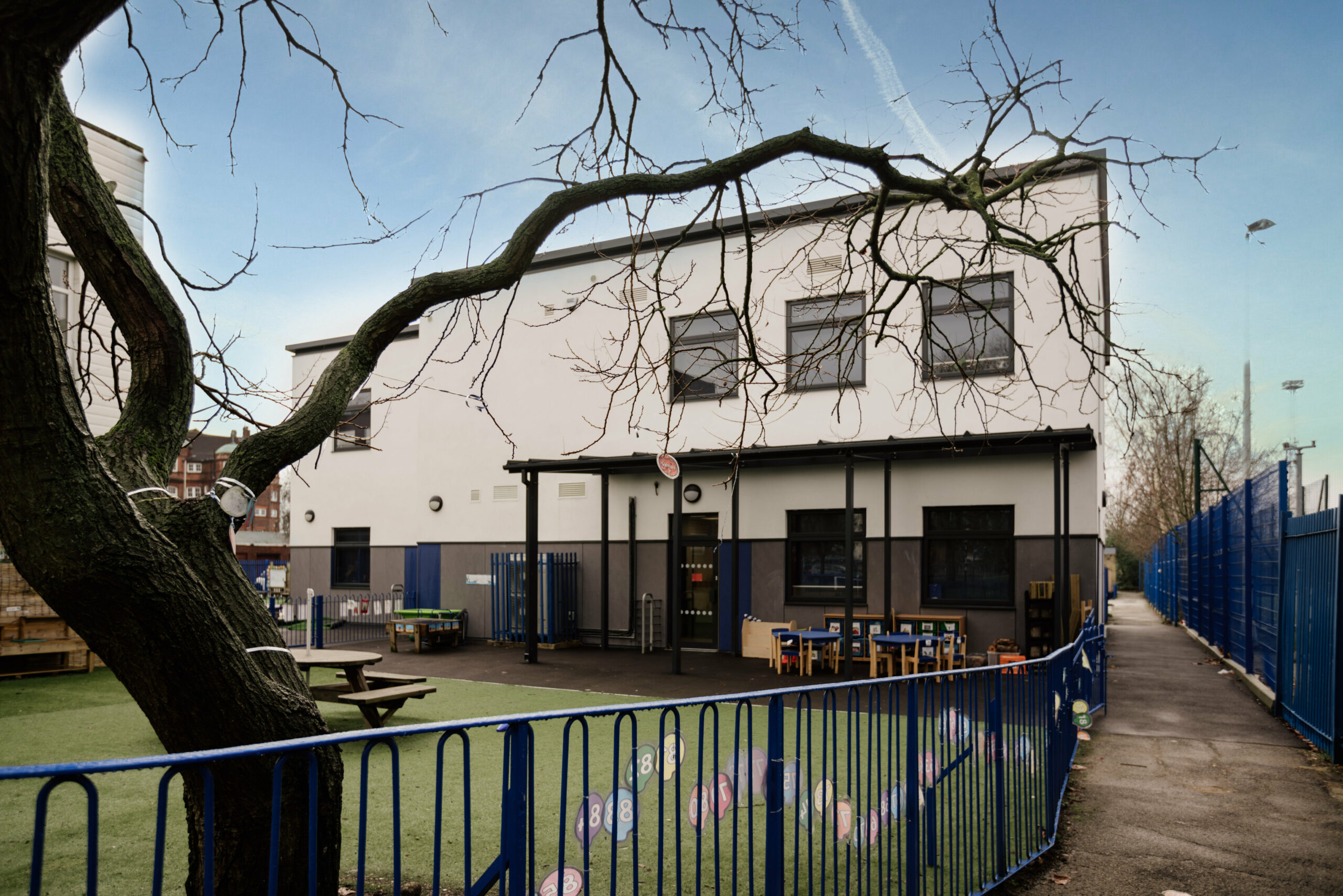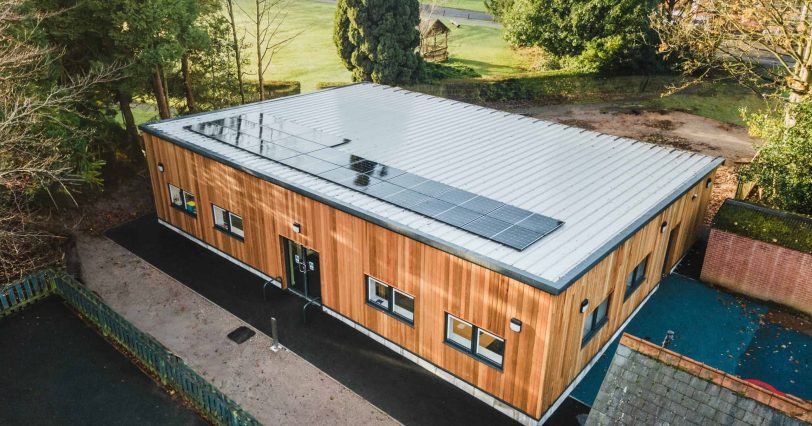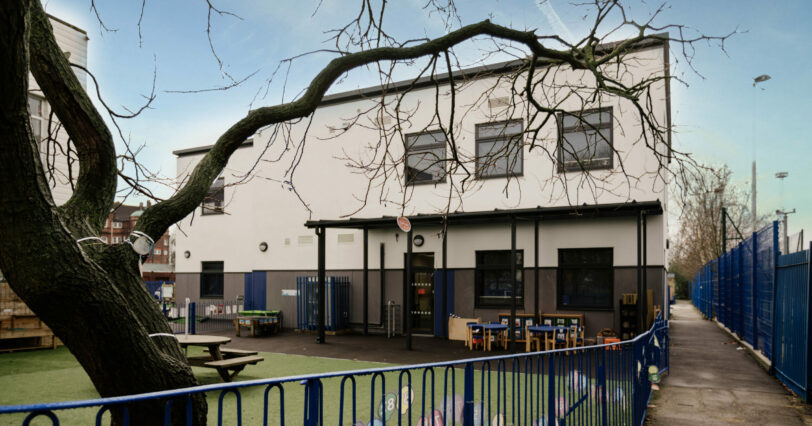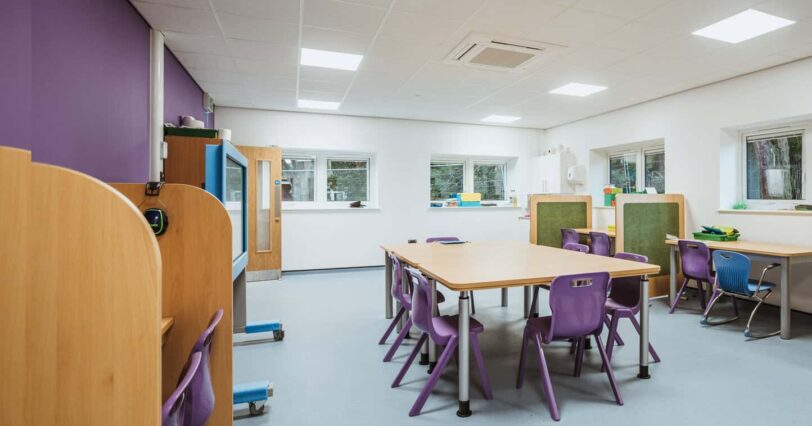The power of nature is widely documented, particularly when it comes to helping children develop and learn. According to Natural England, children who spend time outside connecting with nature improve in all sorts of areas, including attendance, behaviour and academic achievement.
Over the years, increased awareness of the positive impact the great outdoors can have on children coupled with global net zero targets, has resulted in more-and-more schools rethinking their sites from an environmental perspective.
Let’s explore some of these green-focused enhancements, better known as biophilic design, in closer detail…
1. Large windows
Generously-proportioned windows in classrooms, dining areas and other spaces instantly bring the outdoors in, bringing students that bit closer to nature, as well as providing valuable ventilation. Increased natural daylight levels are said to significantly influence student performance, making them feel more relaxed and better able to concentrate.
2. Mono-pitched roofing
This roofing design goes hand-in-hand with specifying large windows because it typically incorporates a single, sloping surface (hence the name). With some projects, the highest point can stand at four or more metres tall, creating the perfect location for a statement window that maximises those natural daylight streams.
In addition, the pitched design helps with water run-off, preventing roof damage and allowing surface water to be collected and redirected and reused where appropriate.

3. Natural materials and textures
Lots of schools are going back to nature when it comes to refurbing and expanding their sites with timber panelling, as well as natural stone and fibres, such as wool, linen and even goat hair. When combined with a natural colour palette, the end result is extremely impactful, especially when these areas are flooded with natural daylight.
4. Strategically-planted greenery
Courtyard planters, vegetable patches, living walls, green roofs, classroom plants and, of course, gardens, are all capable of injecting some real-life greenery into educational settings. Not only do plants help soften and enhance the overall aesthetics, they have been found to boost students’ emotions, behaviour and health.
5. Space-saving construction
Modular construction has paved the way forward for creating educational areas with smaller, more environmentally-friendly footprints, thanks to the ability to stack modules on top of each other. In turn, this means green areas can be preserved for outdoor learning and play and sites can still continue to grow without eating into this valuable space.
And when you combine modular building with the latest low carbon, sustainable, high-performance solutions – for instance, PV solar roof panels and highly insulated facades – schools can improve student wellbeing and their environmental impact for generations to come.

The beauty of biophilic design is that it can, and should, be embraced by schools large and small, and as little or as much as they want to embrace it too. At its most effective, it is capable of transforming schools into future-proofed environments that boost academic success and champion sustainability, as standard. For more on how schools can benefit from modular, sustainability-focused design, get in touch with us. To find out more about how we have helped schools accelerate their zero carbon journeys, plus more, take a look at our latest case studies.







